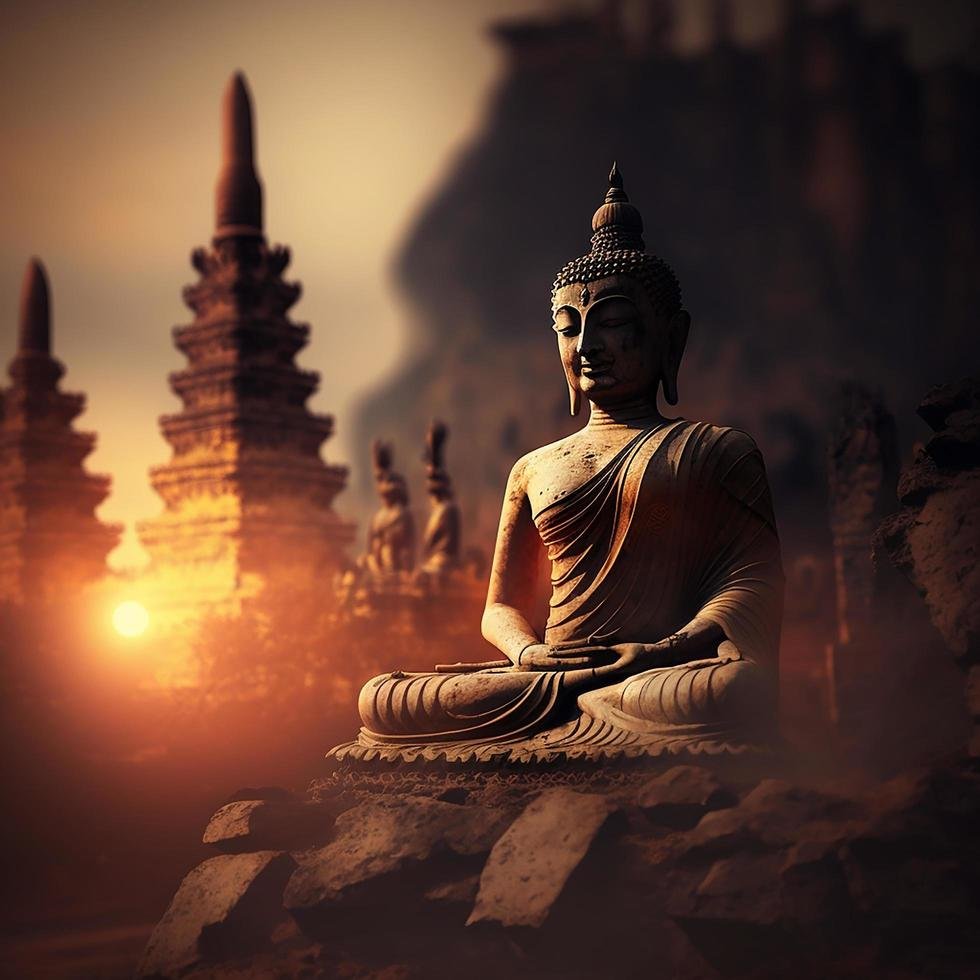India, the birthplace of Buddhism, is home to some of the most revered and visually stunning Buddhist monasteries in the world. Buddhist Monasteries in India are not just religious centers—they are living institutions of meditation, philosophy, art, and community. Spread across the Himalayas, Northeast India, and ancient heartlands like Bihar and Uttar Pradesh, these monasteries reflect the diversity of Buddhist traditions including Theravāda, Mahāyāna, and Vajrayāna.
🏔️ Tawang Monastery, Arunachal Pradesh
Tawang Monastery is the largest Buddhist monastery in India and the second largest in Asia.
- Founded in 1680 by Merak Lama Lodre Gyatso.
- Belongs to the Gelugpa sect of Tibetan Buddhism.
- Houses a massive 8-meter golden Buddha statue and over 500 monks.
- Offers panoramic views of the Tawang Valley and hosts the vibrant Torgya Festival.
Tawang is a spiritual and cultural beacon in Northeast India, blending monastic discipline with Himalayan grandeur.
🧘 Rumtek Monastery, Sikkim
Rumtek Monastery is the seat of the Karma Kagyu lineage of Tibetan Buddhism in India.
- Originally built in the 16th century, rebuilt in the 1960s by the 16th Karmapa.
- Features the Golden Stupa containing relics of the Karmapa.
- Hosts the Dharma Chakra Centre, a hub for Buddhist teachings and rituals.
- Surrounded by lush hills and peaceful ambiance.
Rumtek is a spiritual powerhouse and architectural marvel, attracting monks and seekers from around the world.
🏞️ Hemis Monastery, Ladakh
Hemis Monastery is the largest and wealthiest monastery in Ladakh.
- Belongs to the Drukpa lineage of Vajrayāna Buddhism.
- Famous for the Hemis Festival, celebrating Guru Padmasambhava with masked dances and rituals.
- Houses ancient thangkas, statues, and sacred relics.
- Located in a remote valley, offering tranquility and spiritual immersion.
Hemis is a must-visit for those exploring Ladakh’s spiritual and cultural landscape.
🕊️ Thiksey Monastery, Ladakh
Thiksey Monastery resembles the Potala Palace in Lhasa and is one of Ladakh’s most photogenic gompas.
- Built in the 15th century, belonging to the Gelugpa sect.
- Features a 15-meter Maitreya Buddha statue and multiple prayer halls.
- Hosts morning prayers open to visitors, offering a glimpse into monastic life.
- Offers panoramic views of the Indus Valley.
Thiksey is ideal for spiritual reflection and cultural photography.
🏯 Namdroling Monastery, Karnataka
Located in Bylakuppe, Namdroling Monastery is the largest teaching center of the Nyingma lineage in the world.
- Founded by Penor Rinpoche in 1963.
- Known for its Golden Temple, vibrant murals, and massive statues of Buddha and Padmasambhava.
- Home to over 5,000 monks and nuns.
- Hosts the Losar Festival and regular teachings.
Namdroling offers a unique Tibetan Buddhist experience in South India.
🌄 Ghoom Monastery, West Bengal
Ghoom Monastery, near Darjeeling, is one of the oldest Tibetan Buddhist monasteries in India.
- Built in 1850, belongs to the Gelugpa sect.
- Houses a 15-foot statue of Maitreya Buddha.
- Offers views of Kanchenjunga and a peaceful retreat from the bustle of Darjeeling.
Ghoom is perfect for travelers seeking spiritual calm and Himalayan charm.
🛕 Mahabodhi Temple Complex, Bodh Gaya
While not a monastery in the traditional sense, Bodh Gaya is the most sacred Buddhist site in India.
- Site of Buddha’s enlightenment under the Bodhi Tree.
- The Mahabodhi Temple is a UNESCO World Heritage Site.
- Surrounded by international monasteries built by countries like Thailand, Japan, and Bhutan.
- Hosts Buddha Purnima celebrations and global pilgrimages.
Bodh Gaya is the spiritual heart of Buddhism and a must-visit for all seekers.
🏞️ Sanchi Monasteries, Madhya Pradesh
Sanchi is home to ancient Buddhist stupas and monastic ruins.
- The Great Stupa was commissioned by Emperor Ashoka in the 3rd century BCE.
- Features Ashokan pillars, gateways, and relics.
- Nearby ruins include monastic cells and meditation halls.
Sanchi offers a glimpse into early Buddhist architecture and imperial patronage.
🧘 Dzongu Monasteries, Sikkim
Dzongu is a protected area for the Lepcha community, offering authentic monastic experiences.
- Home to small, serene monasteries like Tholung Monastery.
- Ideal for homestays, nature walks, and cultural immersion.
- Emphasizes sustainable and community-based tourism.
Dzongu is perfect for slow travelers seeking depth and authenticity.
🏞️ Other Notable Monasteries
India hosts many other significant Buddhist monasteries:
- Tabo Monastery (Himachal Pradesh): Over 1,000 years old, known as the “Ajanta of the Himalayas.”
- Phugtal Monastery (Zanskar): Built into a cliffside, accessible only by trek.
- Mindrolling Monastery (Dehradun): A center for Nyingma teachings and meditation.
- Karma Dupgyud Choeling (Leh): A serene retreat for meditation and study.
Each monastery offers unique insights into Buddhist philosophy, art, and community life.
✈️ Travel Tips for Visiting Buddhist Monasteries
- Best Time to Visit: October to March for most regions; summer for Himalayan monasteries.
- Etiquette: Dress modestly, remove shoes before entering, and maintain silence.
- Permits: Required for border areas like Tawang and Zanskar.
- Stay Options: Many monasteries offer guesthouses or nearby homestays.
Final Thoughts
Buddhist Monasteries in India are more than architectural wonders—they are living embodiments of peace, wisdom, and compassion. Whether you’re meditating in Rumtek, attending a festival in Hemis, or walking under the Bodhi Tree in Bodh Gaya, these sacred spaces invite you to pause, reflect, and reconnect with the essence of life.


Leave a Reply